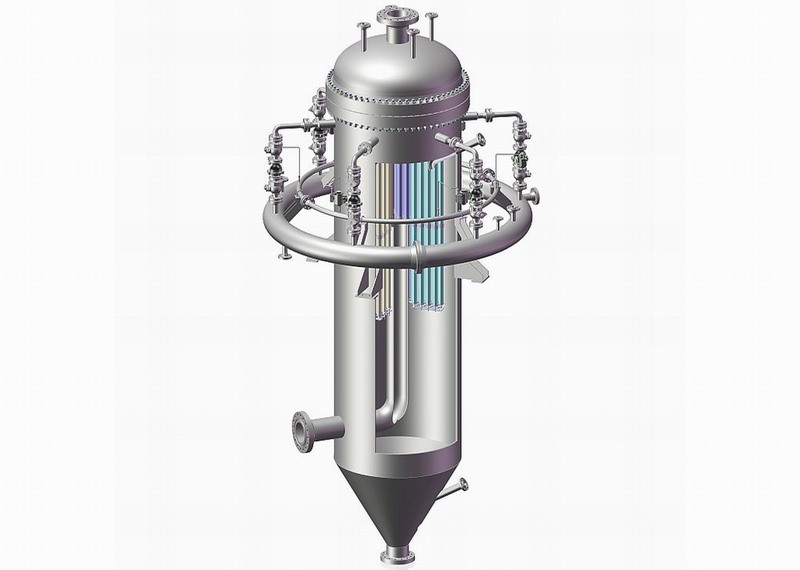In our previous article that paid attention to hot gas filtration in refining and chemical plant. Because of the hot gas filter´s excellent performance in extreme special conditions (such as high temperature, high pressure, toxic gas, etc.). As a result, this filter has been warmly welcomed in refineries and has been used in many refining unit. We now turn our attention to another important application of hot gas filter-CCR’s (the Continuous Catalytic Reforming) elutriation gas filter or the so-called dust collector.
CCR (the Continuous Catalytic Reforming) is a common petrochemical plant. It serves two purposes, to improve the quality of gasoline and to produce petrochemical raw materials. Because it can turns alkanes into aromatics, its most important role is as a bridge between the oil refining and chemical industries. Aromatization of alkanes, high temperatures and powerful catalysts are required. Due to the special reaction mechanism, carbon will deposit on the catalyst surface and deactivate the catalyst after the catalyst reacts in the reactor for a period of time. Therefore, the CCR unit uses a moving bed as the main reactor, the catalyst must be moved to the regenerator to recover its activity continuously, and then recycled back to the reactor to continue catalytic reaction.
During this process, the catalyst will be crushed due to the friction between the catalyst particles and the inner wall of the pipeline. The fine catalyst powder is easy to block the pipeline to prevent the circulation of catalyst, so it is necessary to find a way to ensure that the catalyst can circulate steadily smoothly. Because the catalyst contains a large amount of Pd, the broken catalyst powder still has great recovery value. Therefore, it is necessary to find a way to recover and discharge the catalyst powder automatically after separating the catalyst powder. Propane Dehydrogenation (PDH) unit also faces the same problem.
The most mature option is to add a fluidized-bed type of device that feeds nitrogen from the bottom to blow out the crushed catalyst powder before it enters the regenerator. The exhaust gas from the top of the fluidized bed carries catalyst powder, the unbroken catalyst remains at the bottom of the fluidized bed and then enters the regenerator to be reactivated.
The remaining problem is what to do with the exhaust gas from the fluidized bed. This flow has the characteristics of high temperature and large dust content, and ordinary filtering methods cannot meet the requirements. In order to ensure the stability of the unit and solve the manpower, it is recommended to use Shinkai’s Hot gas filtration with venturi pulse blowback.
Shinkai’s hot gas filter, adopts metal powder sintered filter element as the filter element, through the automatic online partition back blowing way, can realize the continuous filtration, safe and stable.
In addition, the filter can be used in conjunction with the locking hopper for automatic removal of catalyst dust, which is also important for the refinery.
The Shinkai’s hot gas filter has two critical functions:
(1) To recover and transfer catalyst fines to a storage hopper and to ensure particulate emissions are minimized to not only protect downstream equipment but also limit the amount of emissions released into the environment.
(2) To recycle the catalyst and return to the production plant to improve economic efficiency.
Shinkai sintered metal hot gas filtration with venturi pulse blowback are proven to successfully filtering particulate down to less than 5 mg/Nm3. In fact, over the past 10 years, Shinkai has been leading the industry in CCR filtration technology. We have become a trusted supplier to some of the world’s most productive and efficient refineries.


